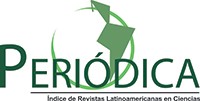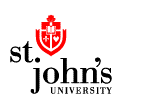CRECIMIENTO DE LIMNOBIUM LAEVIGATUM (HYDROCHARITACEAE) BAJO DIFERENTES CONDICIONES LUMÍNICAS
DOI:
https://doi.org/10.24039/rtb2016142105Palabras clave:
Efecto de la luz, Limnobium, propagación, tasa de crecimiento relativoResumen
Limnobium laevigatum (Humb. & Bonpl. ex Willd.) Heine. es una planta acuática flotante que pertenece a la familia Hydrocharitaceae. Esta especie se caracteriza por tener un rápido crecimiento, y un alto contenido proteico en sus tejidos. Comprender su respuesta a situaciones de mayor o menor cantidad de luz es fundamental para optimizar su crecimiento, maximizando su productividad en condiciones de laboratorio y permitiendo obtener los mejores resultados en la producción de forrajes basados en la biomasa seca de esta especie. El objetivo del presente trabajo fue conocer la respuesta de L. laevigatum bajo diferentes condiciones lumínicas, utilizando para ello, tres tratamientos bajos condiciones de laboratorio (Tratamientos 1, 2 y 3 que equivalen al 100% de luz, 55% de luz y 8% de luz). Se realizaron 30 repeticiones por tratamiento en las que se contó el número de hojas, número de hojas cloróticas, número de rametos, peso, área ocupada, así como la tasa de crecimiento relativa (TCR) durante 28 días de experimentación. Los resultados muestran que el tratamiento 1 (100% de luz) tuvo parámetros de productividad (número de hojas, rametos, peso, área ocupada, así como la TCR) mayor que los otros dos tratamientos. La clorosis fue mayor en el tratamiento 3. En todos estos casos las diferencias fueron soportadas estadísticamente. Los resultados obtenidos nos muestran cómo las variaciones lumínicas dentro de un mismo ambiente, afectan el crecimiento de L. laevigatum. Se comparan las diferentes respuestas fisiológicas y la TCR obtenida en el presente estudio con las obtenidas en estudios previos y en otras plantas acuáticas.Descargas
Citas
Aponte, H. & Pacherres, C.O. 2013. Crecimiento y propagación de Limnobium laevigatum (Hydrocharitaceae) bajo diferentes concentraciones de nutrientes. The Biologist (Lima), 11: 69–78.
Aponte, H.; Kahn, F. & Millán, B. 2011. Adaptabilidad vegetativa a la deforestación de la palma peruana Astrocaryum perangustatum. Revista Peruana de Biología, 18:179–183.
Aponte, H.; Francia, J.C. & Segura, C. 2013. Análisis químico proximal de Limnobium laevigatum y su potencial para su uso como forraje. Cientifica, 10: 158–167.
Begon, M.; Townsend, C.R. & Harper, J.L. 2009. Ecology: from individuals to ecosystems, 4th Ed. John Wiley & Sons, 759pp.
Beltzer, A.; Sabatti, R. & Marta, M. 1991. Ecología Alimentaria de la Polla de Agua Negra Gallinula chloropus galeata (Aves: Rallidae) en un ambiente lentico del Río Parana Medio, Argentina. Ornitología Neotropical, 2: 29–36.
Boettcher Fuentes, C. 2007. Variación comparativa de biomasa estacional en dos macrófitos de la Región de Valdivia, Chile. Ciencia & Trabajo, 9: 191–199.
Brako, L. & Zarucchi, J.L. 1993. Catalogue of the Flowering Plants and Gymnosperms of Perú. Missouri Botanical Garden, aint Louis, Missouri, 1286 pp.
Carbonell, C.S.; Cigliano, M.M. & Lange, C.E. 2006. Especies de Acridomorfos [Orthoptera] de Argentina y Uruguay. The Orthopterists'Society at the Museo de La Plata, La Plata (AR), formato CDROM.
Cedergreen, N. & Madsen, T.V. 2004. Light regulation of root and leaf NO − uptake 3 and reduction in the floating macrophyte Lemna minor. New Phytologist, 161: 449–457.
Corti, P. & Schlatter, R.P. 2002. Feeding ecology of the Black-necked Swan Cygnus melancoryphus in two wetlands of Southern Chile. Studies on Neotropical Fauna & Environment, 37: 9–14.
Ferreira, R.M.B.; Bird, B. & Davies, D.D. 1989. The effect of light on the structure and organization of Lemna Peroxisomes. Journal of Experimental Botany, 40: 1029–1035.
Finlayson, C.M. 1984. Growth rates of Salvinia molesta in Lake Moondarra, Mount Isa, Australia. Aquatic Botany, 18: 257–262.
Hammer, Ø.; Harper, D.A.T. & Rayan, P.D. 2001. PAST: Paleontological statistics software package for education and data analysis. Palaeontologia Electronica, 4:9.
Hasan, M.R. & Chakrabarti, R. 2009. Use of Algae and Aquatic Macrophytes as Feed in Small-Scale Aquaculture: A Review. FAO, Rome, 123pp.
Henry-Silva, G.; Camargo, A.F.M. & Pezzato, M. 2002. Effect of nutrient concentration on the growth of aquatic macrophytes Eichhornia crassipes, Pistia stratiotes and Salvinia molesta. In: Proceedings of the 11 th EWRS International Symposium on Aquatic Weeds, Moliets et Maâ - Francia, pp. 147–150.
Hillman, W.S. 1966. Photoperiodism in Lemna: Reversal of Night Interruption Depends on Color of the Main Photoperiod. Science ,154: 1360–1362.
Hillman, W.S. 1976. Calibrating Duckweeds: Light, Clocks, Metabolism, Flowering. Science, 193: 453–458.
Hoffmann, W.A. & Poorter, H. 2002. Avoiding bias in calculations of relative growth rate. Annals of Botany, 90: 37–42.
Hussner, A. 2010. Growth response and root system development of the invasive Ludwigia grandiflora and Ludwigia peploides to nutrient availability and water level. Fundamental and Applied Limnology / Archiv Für Hydrobiologie, 177: 189–196.
Kato, A. 1982. Kinetic studies of growth and flowering of Lemna gibba G3 under continuous light: Effects of night interruptions with red and far-red light. Plant Science Letters, 27: 203–212.
Körner, S.; Vermaat, J.E. & Veenstra, S. 2003. The capacity of duckweed to treat wastewater: ecological considerations for a sound design. Journal of Environmental Quality, 32: 1583–1590.
Mkandawire, M. & Gert Dudel, E. 2007. Are Lemna spp. effective phytoremediation agents? Bioremediation, Biodiversity and Bioavailability, 1: 56–71.
Pedersen, O.; Christensen, C. & Andersen, T. 2001. Interactions between light and CO stimulate the growth of aquatic 2 plants. Aquatic Gardener, 14: 175–184.
Pistori, R.E.T.; Camargo, A.F.M. & Henry- Silva, G.G. 2004. Relative growth rate and doubling time of the submerged aquatic macrophyte Egeria densa Planch. Acta Limnologica Brasiliensia, 16: 77–84.
Ramirez, D. & Cano, A. 2010. Estado de la diversidad de la flora vascular de los Pantanos de Villa (Lima - Perú). Revista Peruana de Biología, 17: 111–114.
Reddy, K.R. & DeBusk, W.F. 1984. Growth characteristics of aquatic macrophytes cultured in nutrient-enriched water: I. Water hyacinth, water lettuce, and pennywort. Economic Botany, 38: 229–239.
San Martín, C. & Boetscher, C. 2003. Importancia ecológica de la heterofilia en Limnobium laevigatum. Boletín de La Sociedad Argentina de Botánica, (Supl.): 131–132.
Schulze, E.D.; Beck, E. & Müller-Hohenstein, K. 2005. Plant Ecology. Springer. Berlin/Heidelberg. 702 pp. Tobin, E.M. 1978. Light regulation of specific mRNA species in Lemna gibba L. G-3. Proceedings of the National Academy of Sciences of the United States of America, 75: 4749–4753.
USDA, ARS. NGRP (National Genetic Resources Program) 2014. Germplasm Resources Information Network - (GRIN) [On Line Data Base] Leído el 10 de febrero del 2015.
van Gerven, L.P.A.; de Klein, J.J.M.; Gerla, D.J.; Kooi, B.W.; Kuiper, J.J. & Mooij, W.M. 2015. Competition for light and nutrients in layered communities of aquatic plants. The American Naturalist, 186: 72–83.
Xie, Y. & Yu, D. 2003. The significance of lateral roots in phosphorus (P) acquisition of waterhyacinth (Eichhornia crassipes). Aquatic Botany, 75: 311–321.
Publicado
Cómo citar
Número
Sección
Licencia
Derechos de autor 2016 The Biologist

Esta obra está bajo una licencia internacional Creative Commons Atribución-NoComercial-SinDerivadas 4.0.
Objeto: El AUTOR-CEDENTE transfiere de manera TOTAL Y SIN LIMITACIÓN alguna al CESIONARIO (Revista The Biologist (Lima)) los derechos patrimoniales que le corresponden sobre sus obras por el tiempo que establezca la ley internacional. En virtud de lo anterior, se entiende que el CESIONARIO adquiere el derecho de reproducción en todas sus modalidades, incluso para inclusión audiovisual; el derecho de transformación o adaptación, comunicación pública, traducción, distribución y, en general, cualquier tipo de explotación que de las obras se pueda realizar por cualquier medio conocido o por conocer en el territorio nacional o internacional.
Remuneración: La cesión de los derechos patrimoniales de autor que mediante este contrato se hace será a título gratuito.
Condiciones y legitimidad de los derechos: El AUTOR-CEDENTE garantiza que es propietario integral de los derechos de explotación de la(s) obra(s) y en consecuencia garantiza que puede contratar y transferir los derechos aquí cedidos sin ningún tipo de limitación por no tener ningún tipo de gravamen, limitación o disposición. En todo caso, responderá por cualquier reclamo que en materia de derecho de autor se pueda presentar, exonerando de cualquier responsabilidad al CESIONARIO.
Licencia de acceso abierto: El AUTOR-CEDENTE autoriza que manuscrito publicado en la Revista Científica The Biologist (Lima) (versión Impresa ISSN 1816-0719, versión en línea ISSN 1994-9073) permanece disponible para su consulta pública en el sitio web http://revistas.unfv.edu.pe/index.php/rtb/index y en los diferentes sistemas de indexación y bases de datos en las que la revista tiene visibilidad, bajo la licencia Creative Commons, en la modalidad Reconocimiento-No comercial- Sin Trabajos derivados –aprobada en Perú, y por lo tanto son de acceso abierto. De ahí que los autores dan, sin derecho a retribución económica, a la Escuela Profesional de Biología, Facultad de Ciencias Naturales y Matemática de la Universidad Nacional Federico Villarreal (EPB - FCCNM - UNFV), los derechos de autor para la edición y reproducción a través de diferentes medios de difusión.








































